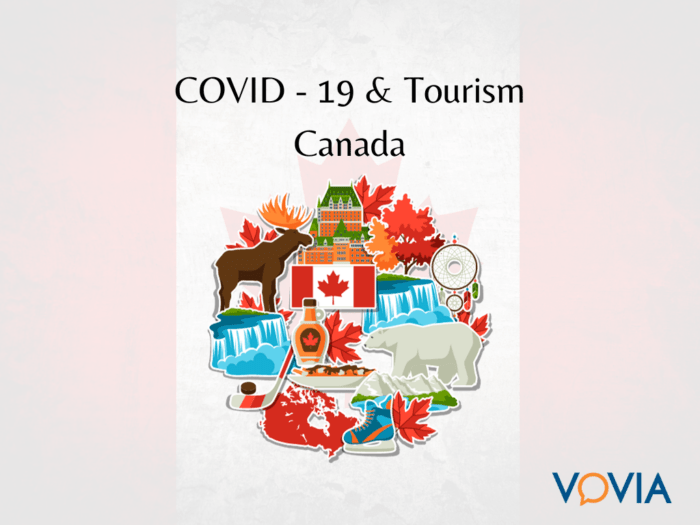The Impact of the Pandemic on Tourism in Canada: Before and After
With the advent of the pandemic in March – 2020, one of the main industries that was impacted was the travel and tourism industry. Governments world over imposed travel restrictions only allowing non-discretionary or emergency travel. This had a massive impact on travel and tourism industry. It must be noted that while the industry has seen a resurgence over the last 2 years, in this article we will explore trends and patterns seen during the peak pandemic period, the resurgence once the restrictions were eased as well as the path forward. We will also look at how we can leverage Google Ads and the various campaign types to help customers and retailers alike.

Travel in 2020 – The Pandemic years:
As we all know, during the pandemic, strict travel bans were put in place worldwide. The situation in Canada was no different with the Canadian government imposing travel bans on all non-Canadian citizens and permanent residents except for US citizens. Even with emergency travel, mandatory hotel quarantines were in effect for most of 2020 and 2021. Domestic travel in Canada was also impacted with provincial governments setting up their own versions of travel restrictions aimed at limiting non-discretionary travel. These changes had far-reaching effects on the economy. As per a StatCan article, the tourism GDP for Canada was down almost 50% annually and tourism’s share in the total GDP, fell from 2.0% in 2019 to 1.1% in 2020. Tourism spending for 2020 was almost cut in half (48.1% lower than 2019).
As per the same StatCan article, as seen in the graph above, almost 44.9% (nearly half) of businesses in the tourism sector In Canada experienced a decline of 40% or more in revenue in 2020 as compared to the 20% being seen for all businesses in Canada.
2021-2022: The Tourism Resurgence Starts:
Towards the end of 2021, the world was cautiously optimistic about travelling again. With vaccine distribution ramping up and restrictions slowly starting to ease, travel was rebounding after a brutal year and a half for the industry. As per a Google Ipsos study, by the fall of 2021, 36% of people around the globe were participating in some sort of travel activity. Moreover, travelers believed they felt safer, with the perceived risk of taking a vacation down by 17% since January 2021.
All of this is to say that while people were willing to step out of their homes to travel, there was still a lot of hesitancy. This was due to a variety of reasons but primarily the reason was fear/uncertainty. This is why people were travelling within groups they knew, sticking to domestic locations and restricting visits to friends and family. This would allow them the freedom to travel while mitigating some of the risk of travel. Understandably, domestic trips saw were also on the rise across the world with a Google-Ipsos study indicating that almost 40% to 50% of the travelers across the world doing their 2021 holiday travel domestically. The same study also says that of those expecting to travel during this period, 55% plan to travel outside of their state or province but within their own country, and 53% plan to travel within their state or province.
With most of the world being back to normal, the travel and tourism industry is now truly showing signs of post-pandemic recovery. All through 2022 and going into 2023, Canadian tourism has seen a definite improvement. This improvement can be seen in terms of revenue generated by the sector, contribution of the sector to the GDP and the jobs it has generated. According to a report released by the World Travel & Tourism Council, the sector is set to contribute $162.6 billion to the Canadian economy this year, up 17.2% from last year and within touching distance of the previous peak of $173.9 billion in 2019. WTTC is also forecasting that Travel & Tourism will create 90,000 jobs this year, recovering almost all of the jobs lost due to the COVID-19 pandemic to reach 1.64 million. Employment levels are also within touching distance of the 2019 high point. The fact that the numbers are reaching pre-COVID numbers is very promising for the coming years.
Julia Simpson, WTTC President & CEO was quoted saying, “Travel & Tourism is recovering strongly in Canada with high visitor demand. The sector is a vital driver of economic growth and job creation in Canada with cities such as Vancouver, Toronto and Montreal remaining must-see global destinations for international visitors. As overseas visitors continue to return to Canada, we will see international visitor spending recovering quickly, to reach 2019 levels in the coming years”. This perfectly sums up the trends being seen globally with Europe, Japan and other parts of south east Asia.
How Can Google Help:
Like most things in life, travel and tourism also, irrespective of the nature of the trip, whether it be work or pleasure, often starts with a Google search. Whether it is places to visit within a certain city, restaurants to check out while in the city, best deals on hotels and flight travels, etc. Google is integral to the planning details of the trip. As per a Google study, the internet accounts for over 74% of both leisure and travel planning. With 57% of leisure travellers and 64% of business travellers claiming that they always start their travel booking and shopping process with search, having a robust Google strategy is beyond critical. Here are some of the strategies that can be used to improve overall performance:
- Fully Utilize Google Properties: Using search campaigns, intent-based audiences can be reached quite comfortably however it is also essential to plan budgets to include channels such as Google display network, YouTube, Google discovery and performance max campaigns as well. With extremely relevant top-of-the-funnel interest, topic, and custom intent targeting options available on the platform, your business can leverage existing customer interest as well as be present in front of potential new customers as thereby adding more people to the funnel.
- Focusing on communication: Identifying and emphasizing unique selling points of your product in the adcopy is critical in driving quality traffic to the website. During the 2021-22 time period, it was noticed that several hotels were calling out the cleanliness and hygiene protocols that were put in place to ensure customer safety. This is a perfect example that explains the impact of utilizing adtext that is tailored to highlight special product features that resonates with the customers. Having separate messaging for top of the funnel customers and mid to lower funnel customers is a sure-fire way of generating, maintaining, and leveraging interest in your brand.
- Account for seasonality: Seasonality plays a huge part in the performance of an account, especially for a travel and tourism client. Depending on the geographic location, season of the year or special events, campaigns can be setup and optimized to maximize the performance by leveraging the increased demand during a particular time of the year. To further dial in the campaign optimization, geo level bidding and day parting can be implemented to fully leverage interest around specific events. Depending on the scale and scope of the project, we can also investigate creating a new campaign to reach out to potential customers.
- Add Verified Customer Testimonials to The Website: “A happy customer tells a friend; an unhappy customer tells the world” is an old adage that is relevant to this day. As per a study commissioned by Coca Cola in 1980, unhappy customers told a median of 9–10 people about their experience whereas completely satisfied customers told a median of 4–5 people about theirs. While the study might be old, the insights from this study are as relevant today as they were back in 1980. This is especially evident in the travel and tourism industry where providing validity and trust is critical for users. Before financially committing, customers usually will look for testimonials from other customers. If the landing page has positive and thorough reviews and testimonials, it has a net positive impact on the conversion rate for the website.
These steps will certainly help improve overall performance for the business and drive more revenue. It will also help provide a better experience for the customer which will also foster repeat business. Want to bounce ideas off of us? Drop us a line at info[at]vovia.com, or connect with us on social!
